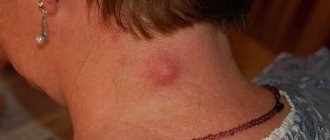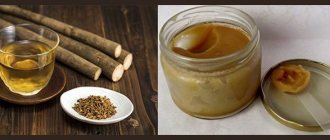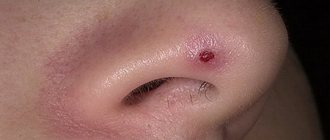Pharyngitis is an inflammatory process in the pharynx, occurring acutely or chronically. Local signs of pharyngitis are detected when examining the posterior wall of the pharynx.
This is a rather unpleasant disease, the main symptom of which is a constant sore throat and the desire to cough, which can cause insomnia and discomfort when being in society (work, lectures in educational institutions, watching a movie in a cinema, etc.).
However, this is not the only annoying thing about pharyngitis. The disease can cause quite serious complications that spread to other organs and systems.
What it is?
Pharyngitis is an acute or chronic inflammatory process in the mucous membrane of the posterior pharyngeal wall, often of a viral or bacterial nature. Often combined with tonsillitis. It manifests itself as a sore throat, a feeling of a “lump” and a sore throat that gets worse when swallowing, a dry cough, and an increase in temperature.
In most cases, a complete cure is possible, and the transition from an acute process to a chronic one is possible. Less commonly, serious complications may occur: rheumatic damage to the heart and joints.
Traditional methods
Traditional medicine will help cope with the symptoms of pharyngitis and improve the normal general condition of a person.
In case of a mild form of the disease, the following remedies can completely eliminate the symptoms of the disease:
- Lightly heat white cabbage juice or beet juice. Use for pharyngitis as a rinse for at least 4 r. in a day.
- To improve the mucous membrane of the throat, take a protein shake, beat it with rosehip oil (3 ml), then lubricate the throat, or you can drink this mixture.
- 1 l. honey, dilute 2 quail eggs in 1 cup. milk, drink in small sips. This remedy instantly relieves burning and itching.
- For irritation and sore throat, a soda-salt solution for gargling helps.
- 100 ml honey, 50 g chopped garlic, mix, put on fire. Cook until the garlic becomes soft. Use 1 tsp every 2 hours; this remedy is suitable for various types of acute pharyngitis.
- 50 g of St. John's wort herb and 500 ml of boiling water, cook for 10 minutes. in a water bath. Using a kettle, inhale over a slightly cooled decoction for about 10-12 minutes, but only if there is no fever. Carry out the procedure 3 times. in a day.
- Infuse 1 tbsp. l. mint in 1 cup. boiling water, strain. Use for inhalation.
Classification
According to the course of the disease, acute forms of pharyngitis are distinguished, as well as chronic ones.
They are divided according to the degree and depth of damage to the structure of the mucous membranes of the pharynx: catarrhal OF, purulent OF,
- Acute catarrhal pharyngitis - externally characterized by the appearance of swelling and hyperemia (redness) of the mucous membranes of the pharynx. At the same time, many red follicle grains sometimes form on its back wall, and clear or slightly cloudy mucus accumulates. There is swelling and redness of the tongue.
- Purulent forms of acute pharyngitis are accompanied by the appearance on the surface of the posterior pharyngeal wall of accumulations of purulent masses with the possible formation of ulcers.
Acute pharyngitis can occur independently, and can also be accompanied by acute inflammation affecting the upper respiratory tract: rhinitis or inflammation of the mucous membranes of the nasopharynx.
The forms of chronic pharyngitis differ in the depth of damage to the structure of the mucous membranes of the pharynx: catarrhal, hypertrophic and atrophic.
- Chronic catarrhal pharyngitis is characterized by hyperemia, slight swelling of the tissue layers of the pharyngeal mucosa. Individual areas are sometimes covered with clear or slightly cloudy mucus.
- Chronic hypertrophic pharyngitis is a significant severity of hyperemia and swelling of the mucous membrane. Additionally, thickening of the uvula and swelling of the soft palate are observed.
- Chronic atrophic pharyngitis is characterized by some thinning (atrophy) of the lining of the pharynx. They are usually pale pink, sometimes shiny varnished. Some of their areas become covered with crusts, viscous mucus, often with pus.
Lateral pharyngitis is one of the forms of hypertrophic chronic pharyngitis, characterized by hypertrophy of lymphadenoid tissues located inside the pharyngeal lateral folds behind the palatine arches.
Causes of pharyngitis
Basically, pharyngitis in children and adults occurs due to inhalation of too cold or polluted air. Pharyngitis can also be triggered by some irritations with chemicals - tobacco, alcohol, etc. Infectious pharyngitis occurs due to exposure to microbes - streptococci, staphylococci, pneumococci. It also develops under the influence of a number of viruses and fungi. Sometimes the manifestation of pharyngitis causes the spread of infection from a focus of inflammation located near the pharynx. Pharyngitis often occurs in patients with rhinitis, sinusitis, and caries.
In some cases, the development of chronic pharyngitis occurs due to the presence of pathology of the gastrointestinal tract. This is possible with cholecystitis, gastritis, pancreatitis. Chronic catarrhal pharyngitis manifests itself as a consequence of acidic stomach contents entering the pharynx during sleep if a person has progressive gastroesophageal reflux disease. In such a situation, it is important to initially eliminate the underlying ailment. Also, heavy smoking is often the cause of atrophic changes in the pharyngeal mucosa.
The development of pharyngitis is often observed in people who suffer from constant difficulty breathing through the nose. The development of pharyngitis is directly influenced by constant mouth breathing and the effect of vasoconstrictor drops that flow into the pharynx.
Chronic pharyngitis also sometimes develops as a consequence of allergies, as well as in patients with various endocrine disorders, diabetes mellitus, as well as heart, pulmonary and renal failure.
First signs
The most common signs of pharyngitis are:
- red throat (the back wall of the pharynx with protruding individual follicles in the form of red grains), inflammation of the soft palate;
- sore throat when swallowing, soreness (burning, rawness) in the throat;
- discomfort when swallowing, hoarseness;
- dry cough, aggravated by laughing, crying, or changes in air temperature;
- nasal congestion (rhinitis, nasopharyngitis), conjunctivitis;
- general weakness, headache, congestion in the ears;
- enlarged lymph nodes in the neck;
- body temperature is normal or subfebrile.
Symptoms of pharyngitis
Symptoms of pharyngitis (see photo) depend on the nature of the disease.
Acute pharyngitis is usually an independent disease that develops after inhaling irritating gases and dust (most often), eating hot or too cold food, overheating and hypothermia. As a rule, the patient (child or adult) complains of a sore and sore throat, a dry and sometimes painful cough. It is possible that the temperature may rise to subfebrile levels (37.5...38°), rarely higher. If acute pharyngitis is detected against the background of another disease (for example, ARVI), manifestations of the underlying disease (measles, scarlet fever, influenza and others) are added to the clinical signs of pharyngitis.
Symptoms of acute pharyngitis against the background of ARVI or other infectious diseases are supplemented by signs of the underlying disease: high fever, difficulty breathing, signs of intoxication, rash, and so on.
When examining the throat (pharyngoscopy), you can notice pronounced redness of the pharyngeal mucosa. In some cases, small ulcerations of the mucous membrane are detected. It is necessary to distinguish between acute pharyngitis and acute tonsillitis. Acute tonsillitis (tonsillitis) is called local inflammation of the tonsils; in acute pharyngitis, the inflammatory process takes on a more diffuse character, and the symptoms of acute tonsillitis (pain when swallowing, fever, enlarged cervical lymph nodes) are supplemented by symptoms of inflammation of the walls of the pharynx: sore and dry throat, dry cough.
Symptoms of the disease
The main symptom of the development of pharyngitis is constant “scratching” in the throat, pain, and discomfort. During examination with a mirror, a reddened and inflamed posterior wall of the pharynx is visible, which is covered with white granules, plaques, and spots.
Loss of strength, headache, persistent and dry cough complement the overall clinical picture of this disease. These symptoms indicate an exacerbation of chronic pharyngitis or the development of an acute stage. As a rule, this disease is caused by viruses; often the disease appears secondary to a runny nose, flu, or cold.
Purulent mucous discharge that flows down the back wall of the larynx infects the mucous membrane, which leads to the appearance of symptoms of the disease and the inflammatory process of the pharyngeal mucosa. Viral pharyngitis is contagious, and newborns are most susceptible to it.
The main signs of chronic pharyngitis are characterized by the following symptoms:
- Pain during swallowing movements, an “empty” sip is particularly painful (unlike a sore throat, pain in the throat intensifies after waking up from a night’s rest and subsides after a warm drink).
- Sore and dry throat.
- Aching pain in the ears (when the infection has penetrated the tubopharyngeal ridges).
- Sometimes a slight increase in temperature up to 37.4 degrees (in newborns it is often higher).
- Hoarseness of voice.
- A hysterical and dry cough.
- Pain during palpation of the lymph nodes of the upper neck.
The disease can be acute or, in the case of a chronic stage, have mild symptoms . Most often (approximately 80%) pharyngitis is the result of viral infections.
Therefore, the disease usually manifests itself during viral epidemics and off-season . It is interesting that viruses, weakening the local immune system, allow bacterial flora to actively multiply on the surface of the pharynx, thereby exacerbating the process of inflammation.
Symptoms of chronic pharyngitis
Patients suffering from chronic atrophic pharyngitis are disturbed by dryness, a feeling of scratching or soreness in the throat. A dry cough is possible. Pharyngoscopy reveals a dry, pale, thinned, shiny (varnished) mucous membrane of the pharynx, in places covered with mucus and crusts.
With catarrhal and hypertrophic chronic pharyngitis, patients complain of a feeling of rawness, soreness or a foreign body in the throat, and mild pain when swallowing. Thick mucous discharge constantly accumulates in the patient's throat, so the patient constantly coughs up. The cough worsens in the morning, in some cases accompanied by nausea and vomiting.
Pharyngoscopy for catarrhal pharyngitis reveals diffuse hyperemia and thickening of the mucous membrane of the pharynx, uvula and soft palate. The pharynx is covered in places with viscous mucous or mucopurulent discharge. Certain groups of follicles are enlarged. Hypertrophic pharyngitis is characterized by more pronounced changes. With granulosa hypertrophic pharyngitis, there is a proliferation of lymphoid tissue in the area of the posterior wall of the pharynx, with lateral hypertrophic pharyngitis - hyperplasia of the lymphoid tissue behind the posterior palatine arches.
Classification and symptoms of manifestation
The development of the chronic type of pathology occurs slowly. Remissions can be followed by periods of exacerbation, which is provoked by hypothermia, acute respiratory infections, which affect the decline of the immune system.
Depending on the course of the disease, chronic pharyngitis is divided into several forms, accompanied by their typical clinical symptoms:
- Catarrhal. This form of the disease is observed mainly in people who are more susceptible to various unfavorable factors: active or passive smoking, air pollution, household dust. At the initial stage of remission, the patient complains of dry throat, stiffness of the larynx during inhalation and exhalation. The inflammatory process is acute, and slight swelling appears in the throat.
- Hypertrophic. This type of disease is characterized by thickening of the laryngeal mucosa and an increase in lymphoid tissue. The symptoms are almost the same as those that can be observed with the catarrhal form. In addition, in the area of the posterior wall of the larynx, one can constantly observe purulent discharge, accompanied by bad breath and a dry cough that cannot be eliminated with medications. In this case, the patient has difficulty swallowing, and there is a feeling of a lump in the throat.
- Subatrophic. It is considered one of the dangerous types of chronic pharyngitis. This is explained by the high probability that mucosal cells begin to transform into cancerous tumors and necrosis. A typical clinical picture for this type is enlarged lymph nodes, which harden over time and cause pain when touched.
- Granular. Multiple nodules form on the mucous membrane. At the same time, the ability to produce secretions decreases. The patient constantly feels dry mouth.
- Atrophic. The last, most serious stage of the disease, difficult to treat. As a result, mucosal cells begin to die, and the likelihood of cancer formation increases several times. Maximum deformation of the mucosa occurs, which leads to a complete loss of its properties. A dense layer forms in the affected area, which provokes a hacking cough, which prevents you from sleeping at night.
We recommend reading: Frontal sinusitis in adults: causes and treatment with folk remedies
Depending on the degree of manifestation of the pathology, symptoms can be either pronounced or hidden (manifestation begins at the moment when the chronic form worsens).
Common symptoms that can accompany the disease at any stage include:
- not very disturbing sore throat;
- nausea, accompanied in some cases by gag reflexes;
- feeling of dry throat, irritation;
- the presence of a small amount of discharge;
- coughing;
- cervical lymphadenitis;
- exacerbation of symptoms in the morning and their gradual subsidence during the day.
The development of chronic pharyngitis is also possible in pregnant girls. This is explained by the restructuring of the body's immune system during pregnancy.
Moreover, the immune reaction at this time is so strong that it only aggravates the situation, since there is a high probability of exacerbation of symptoms, which is characterized by:
- unbearable pain when swallowing;
- increase in body temperature;
- bouts of severe coughing;
- malaise and muscle relaxation;
- hypertrophy.
Any type of chronic pharyngitis needs treatment. When the first signs indicating the development of the disease appear, you should immediately consult a specialist.
Doctors tell how to distinguish a sore throat from pharyngitis, watch the video:
Diagnostics
The diagnosis is made by a doctor based on complaints, medical history and the results of laboratory and instrumental research methods.
The main diagnostic methods include:
- physical examination;
- epi-, meso-, hypopharyngoscopy;
- bacteriological culture with determination of antibiotic sensitivity of the discharge from the surface of the pharyngeal mucosa.
According to indications, the following may be additionally prescribed:
- cytological examination;
- endoscopy of the nasopharynx and hypopharynx;
- esophagogastroduodenoscopy.
On examination, regional lymph nodes are usually found to be enlarged and moderately painful on palpation. You can see what the throat looks like during illness when an ENT performs an endoscopic examination and takes photos of the affected areas.
The bacteriological method of examining scrapings of the pharyngeal mucosa allows us to identify the nature of the agent that caused the inflammation. In this case, rapid determination of streptococcal antigen plays an important role.
During pharyngoscopy, hyperemia and swelling of the mucous tissue of the pharynx is observed, the back wall is covered with mucous or mucopurulent discharge. Hyperemia and swelling of the palatine tonsils, arches, and the mouth of the auditory tubes are also possible. On the back and side walls of the pharynx, lymphadenoid follicles are identified in the form of rounded bright red elevations (granules).
In the atrophic form of the disease, dryness, pallor and thinning of the pharyngeal mucosa are noted.
Complications
Complications can be divided into local, nearby and distant, and general. The most common local complications in the neighborhood are:
- sore throat (purulent),
- peritonsillar or retropharyngeal abscess,
- acute otitis media (inflammation of the inner ear),
- swelling of the larynx,
- phlegmon,
- laryngitis,
- tracheitis,
- Chronical bronchitis.
In more rare cases, the salivary glands are affected and cervical lymphadenitis develops.
Treatment of acute pharyngitis
At home, quick treatment of pharyngitis in adults and young patients should begin with non-drug measures. These include:
- Gentle mode for the voice. You should limit loud speech, screaming, singing and any other sounds that lead to tension in the muscular apparatus of the hypopharynx;
- Eliminate irritating foods. Salty, peppery, sour, smoked foods irritate the mucous membranes. It is important that the dishes are at a comfortable temperature for the patient - hot and cold substances also harm the epithelium;
- Stop drinking alcohol and smoking, as they act as a damaging factor;
- Maintain semi-bed rest. Additional stress on the body, in the form of physical activity and stress, negatively affects the immune system. This can lead to a more severe course of the disease and its chronicity.
Direct therapy should begin with local procedures. These include frequent rinsing with solutions that disinfect and soften the mucous membrane. Chamomile, sage and chlorophyllipt (eucalyptus extract) have optimal effects. When the temperature rises and severe intoxication, solutions of 0.02% Furacillin (or 3 tablets per 1 liter of boiled water) or 0.05% Chlorhexidine Bigluconate can be recommended.
If the patient is very concerned about the manifestations of the disease, doctors prescribe combination medications in the form of sprays, syrups or lozenges that have analgesic and antimicrobial effects. These include the following drugs:
Sprays:
- Stopangin;
- Hexoral;
- Maxicold Lore;
- Inhalipt;
- Hexaspray.
Lozenges:
- Hexadreps;
- Faringosept;
- Septolete Neo;
- Falimint.
It should be noted that some of the listed medicinal substances have an age limit (from 8 years). What drugs to choose in this case? Treatment of pharyngitis in children over 3 years of age can be carried out with almost any lozenges (with the exception of Hexadreps) and Ingalipt. The optimal remedy should be determined by the attending physician, especially if we are talking about a small child.
To support the body's defense systems, additional maintenance therapy is prescribed, on average for 5-10 days. For this purpose, immunomodulators such as Galavit, Imudon or IRS 19 are used. They not only shorten the treatment time, but also prevent frequent relapses of infection.
Is it necessary to prescribe antibiotics for acute pharyngitis? This is determined by the doctor, depending on the patient’s condition. If he has a high temperature, severe intoxication, or harmful microbes are “seeded” from a throat swab, the use of antimicrobial drugs may be justified. As a rule, regular penicillins (Amoxicillin) without clavulanate or macrolides (Clarithromycin, Erythromycin and others) are recommended.
Gargling with herbs
A popular recipe for this treatment includes calendula, eucalyptus and chamomile.
Dry plants are mixed in equal parts. For one rinse, you need to make an infusion of one glass of boiling water and a tablespoon of the mixture. The composition must be infused in a thermos for at least 50–60 minutes. To perform the procedure, the infusion must be cooled until warm and strained.
The recipes for making infusions are, by and large, the same, but the herbal mixtures are different. You can use not only the compositions, but also one plant. For example, an infusion of spruce needles or apple leaves is excellent in the treatment of pharyngitis.
Inhalations with herbs . To treat throat diseases, it is useful to use herbal inhalations. The list of medicinal plants is the same as for rinsing procedures. It is necessary to prepare a herbal decoction, pour it into a container, and inhale the hot vapors of the composition through your mouth, bending over it. Don't forget to cover yourself with a blanket or towel.
Aromatherapy procedures . You can also cure a sore throat with the help of aromatic oils. The following oils are used to treat pharyngitis: bergamot, fir, geranium, tea tree, lavender, sage. These products are added to water while taking a bath or poured into aroma lamps. Essential oils are very useful for relieving acute attacks of dry cough.
Vegetables for treating pharyngitis at home
How to cure pharyngitis at home when there are no medicinal herbs?
Very simple! Ordinary potatoes are an excellent vegetable for steam inhalation. Potatoes with skins must be boiled until tender. Then drain the water and crush the tubers . After which the standard procedure is performed until the potatoes cool down. This inhalation eliminates dry cough and perfectly softens the throat.
Treatment at home for pharyngitis in children or adults is only possible if the disease is mild. When a person is prone to allergic reactions, it is necessary to try to carefully use both medications and traditional methods of treatment.
During the first few days from the start of treatment at home, the patient's condition should improve. If this does not happen, then you need to consult a doctor .
Treatment of chronic pharyngitis
Is it possible to cure chronic pharyngitis? There is a chance to get rid of this disease forever, but only if:
- absence of atrophic and hypertrophic changes;
- elimination of provoking factors.
How long does it take to treat chronic pharyngitis? It is impossible to answer exactly. Treatment for chronic pharyngitis can take months or even years. Full recovery can be said if there are no exacerbations for at least 12 months.
Therapy is primarily aimed at alleviating the patient’s condition, preventing exacerbations and achieving long-term remission.
Chronic inflammation can be cured using the following methods:
- drug treatment;
- physiotherapeutic procedures (UHF, ultrasound, inhalations with essential oils);
- vitamin therapy, immunomodulators (tablets Immunod, Immunorix);
- healthy lifestyle (no smoking and alcohol);
- exclusion from the diet of foods that irritate the mucous membranes.
How to get rid of hypertrophic pharyngitis? Modern physiotherapeutic techniques are effective - cauterization of granules and nodes with drugs, radio waves or ultrasound. The throat should be treated with an antiseptic, for example, Burov's liquid or Resorcinol. Take homeopathic medicines (Tonsipret or Sinupret).
The choice of medications depends on the etiology of origin. Chronic pharyngitis in adults can be treated with the following medications:
- Antibiotics. These can be drugs of systemic and local action. The following tablets are effective: Amoxiclav or Flemoklav. Local agents in the form of solutions for inhalation - Bioparox and Fluimucil-Antibiotic, in the form of drops - Albucid or Sulfacyl sodium. Read more about antibiotics in the treatment of pharyngitis →
- Antiseptics. Effective medicines for pharyngitis in the form of a spray - Hexoral, Kameton, Yox, Gorlospas, Tantum Verde. These medications relieve pain and reduce inflammation. What to do if the sore throat is very severe? Along with the sprays, you should take tablets, for example, Falimint, Strepsils, Septolete.
- Anti-inflammatory agents for rinsing and inhalation - a decoction of chamomile and sage.
- Antitussive drugs. Sinekod is effective, as is inhalation with Lazolvan and Ambrobene.
To cure the atrophic form, it is necessary to regularly sanitize the oral cavity, remove mucus and crusts from the pharynx. Mucopurulent discharge can be removed by washing with a solution of sodium chloride with the addition of iodine. The back wall should be lubricated with Lugol.
Novocaine blockades are effective for atrophic pharyngitis. They can be combined with Traumeel tablets. The course consists of 8 procedures.
How to cure chronic pharyngitis during an exacerbation? You cannot do without antibiotics, as well as symptomatic medications. The course lasts 7-10 days.
Treatment of chronic pharyngitis in adults
Every patient is interested in the question of whether this pathology can be cured. Definitely yes. The main thing is to see a doctor in a timely manner and choose the right therapy. Often, adults begin to self-medicate with the help of folk remedies without determining the true cause of the disease. Under no circumstances should this be done.
We recommend reading: Surgical treatment of a runny nose at home - from adults to infants
Medicines
Of course, therapeutic therapy should be carried out comprehensively. In addition, in each specific case the course is individual for each patient.
Among the main medications are:
- antibacterial - used by adults during exacerbation of infection; among the most effective are Sumamed, Tsiprolet, Azitral; the duration of use and dosage are determined by the attending physician;
- antihistamines - in most cases, a weekly course of treatment is prescribed for such drugs; popular - Suprastin, Pipolfen;
- antitussives - those drugs whose effect is aimed at eliminating the cough reflex itself are justified - Codelac, Libexin;
- local bacteriophages are a good drug in this category, Lizobact.
In case of exacerbations, a sick leave certificate is issued. During this time, the patient is recommended to adhere to bed rest and minimal physical activity.
In parallel, ultraviolet irradiation, laser treatment and magnetic therapy can be prescribed.
Folk remedies
As an auxiliary method of treating pharyngitis, decoctions of medicinal herbs are used to gargle.
Effective means in this regard are the following fees:
- Black elderberry flowers, speedwell and mint.
- Birch leaves and oak bark.
- Calamus bark and chamomile.
- Horsetail, raspberry (leaves), immortelle.
Plants are taken in equal proportions. The collection (a tablespoon) is brewed in one glass of boiling water. Leave to brew for about two hours. The throat should be gargled with warm broth. You can also perform the procedure with decoctions of chamomile, eucalyptus, mint, calendula, and elm bark, both individually and in collections.
For the procedure, you can use fresh, but diluted with water, juices of white cabbage or beets. An effective, affordable and safe solution for rinsing is table solution, but better than sea salt. Gargling will help reduce pain and discomfort in the throat.
The popular method is inhalation.
Inhalation based on honey is effective. This beekeeping product can also be used for applications. The following remedies can be used for pharyngitis:
- Honey syrup with garlic.
- Pine buds in honey.
Folk remedies are considered very effective. However, they are only auxiliary methods of treatment and their use should be agreed with a specialist.
Treatment of pharyngitis with folk remedies
In folk medicine you can find treatment for all diseases. This is how our people are structured; if there is a disease, then we need to come up with a treatment for it.
Over the years, weak recipes were eliminated, while stronger ones that could really help remained.
All methods of treatment that have survived to this day have been tested by time and people.
Folk remedies are used to relieve inflammation and lubricate the throat. This is done using:
- rinsing;
- inhalations;
- compresses;
- when consumed internally.
But it is better to coordinate any alternative treatment with your doctor. If you use medicinal and traditional treatment at the same time, the effectiveness will be several times higher.











